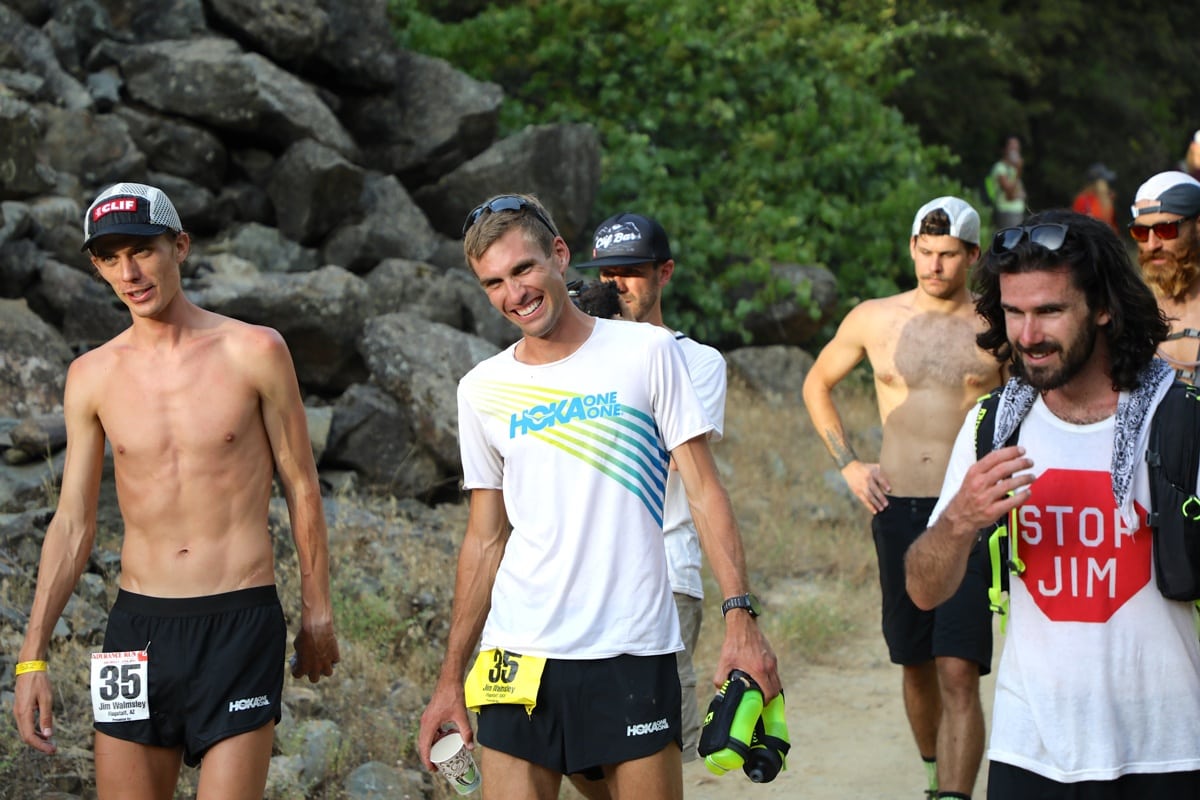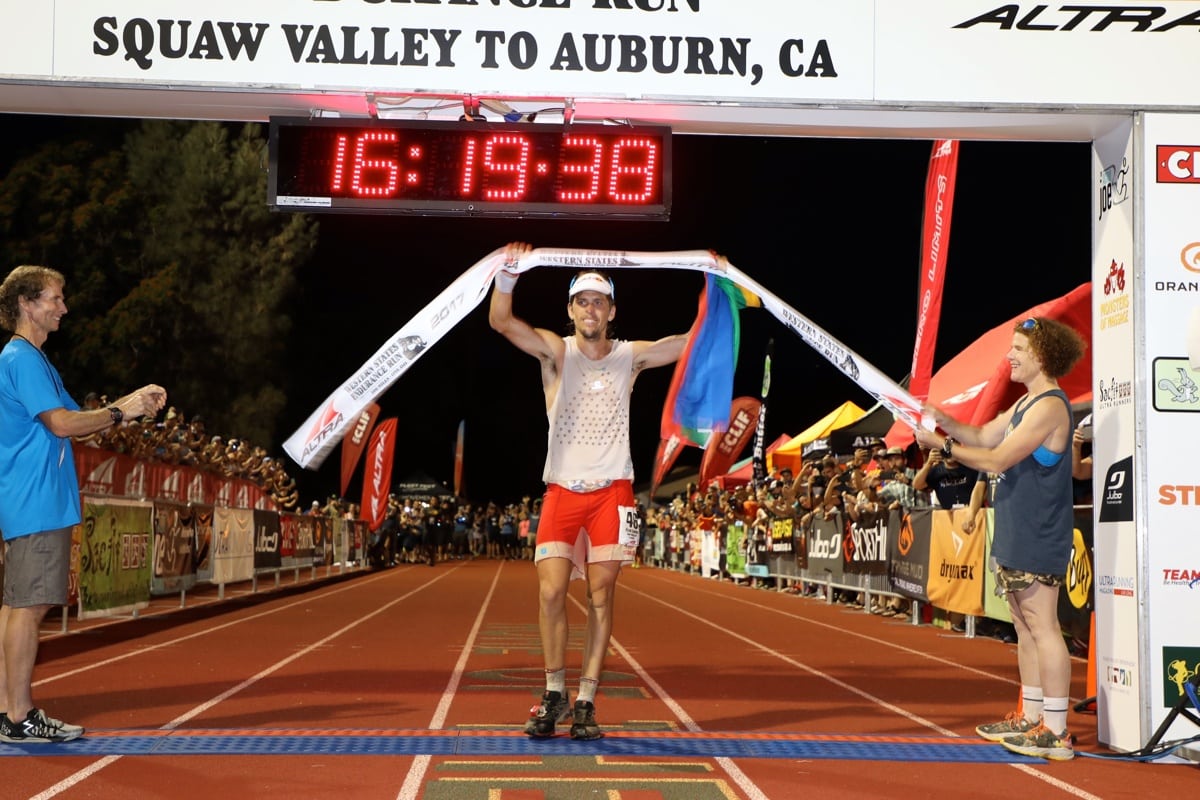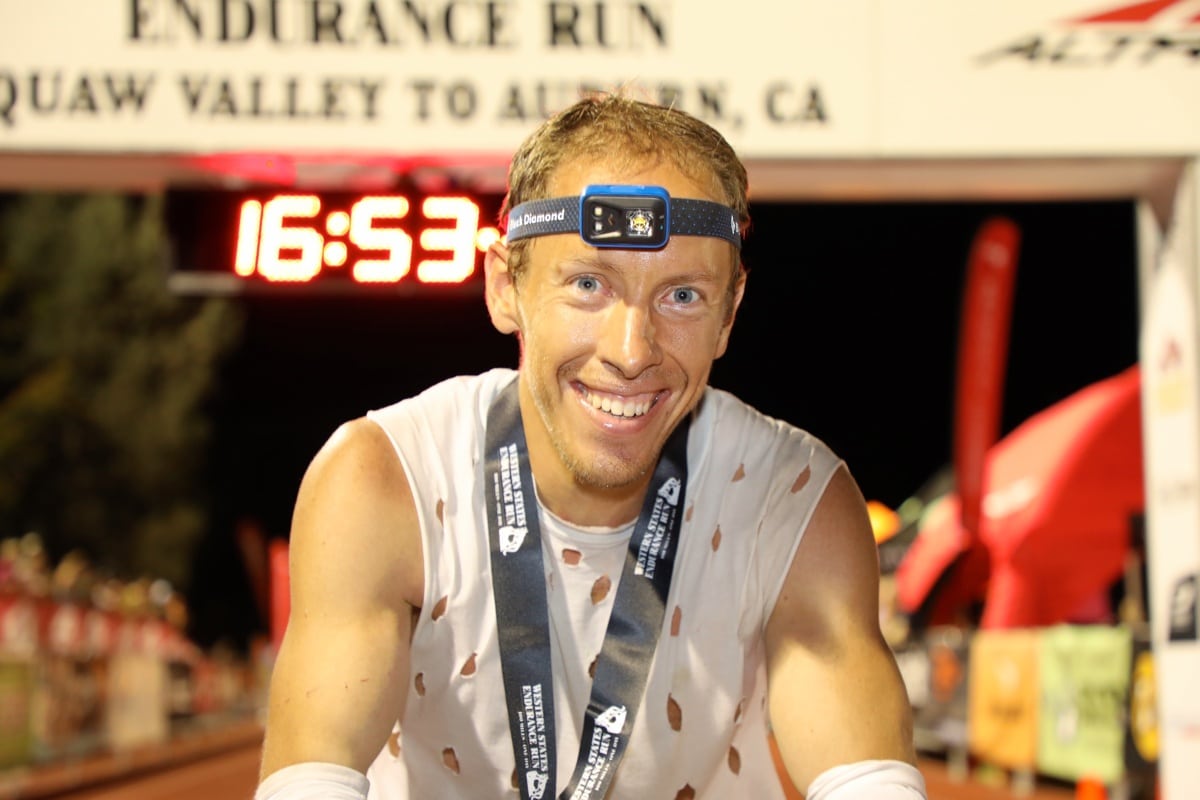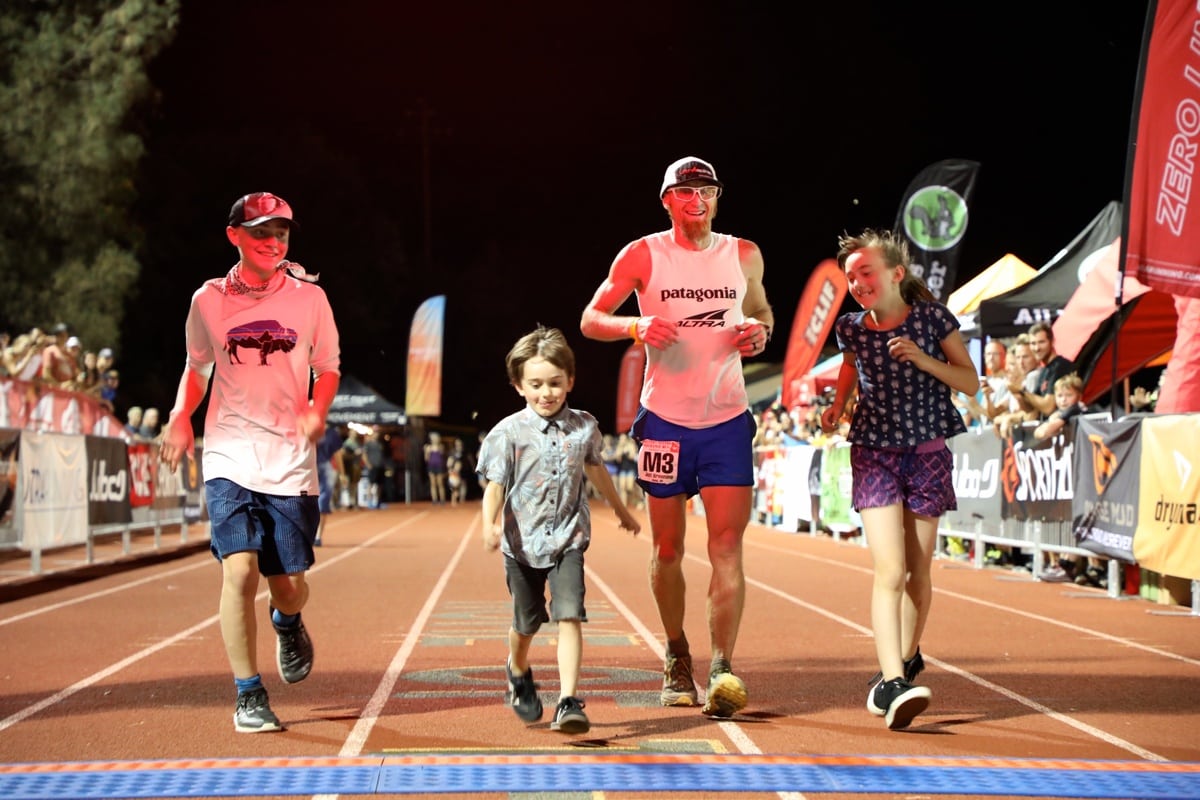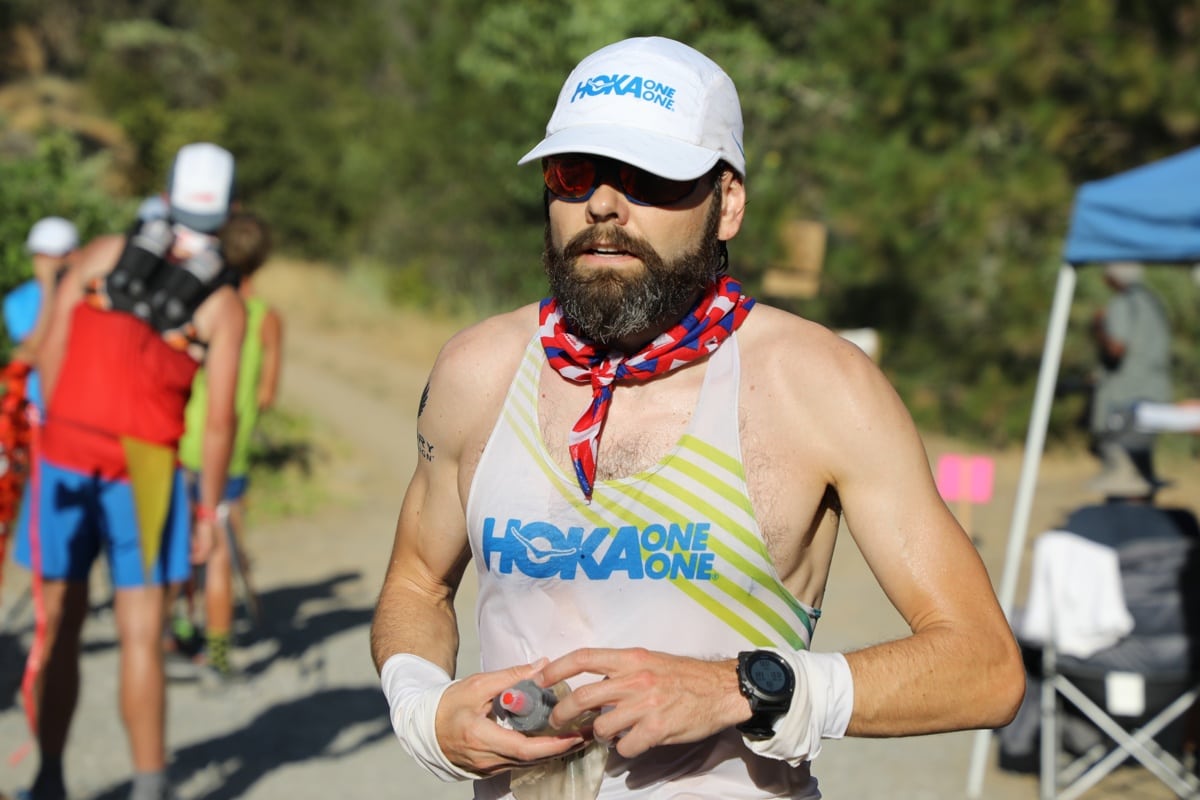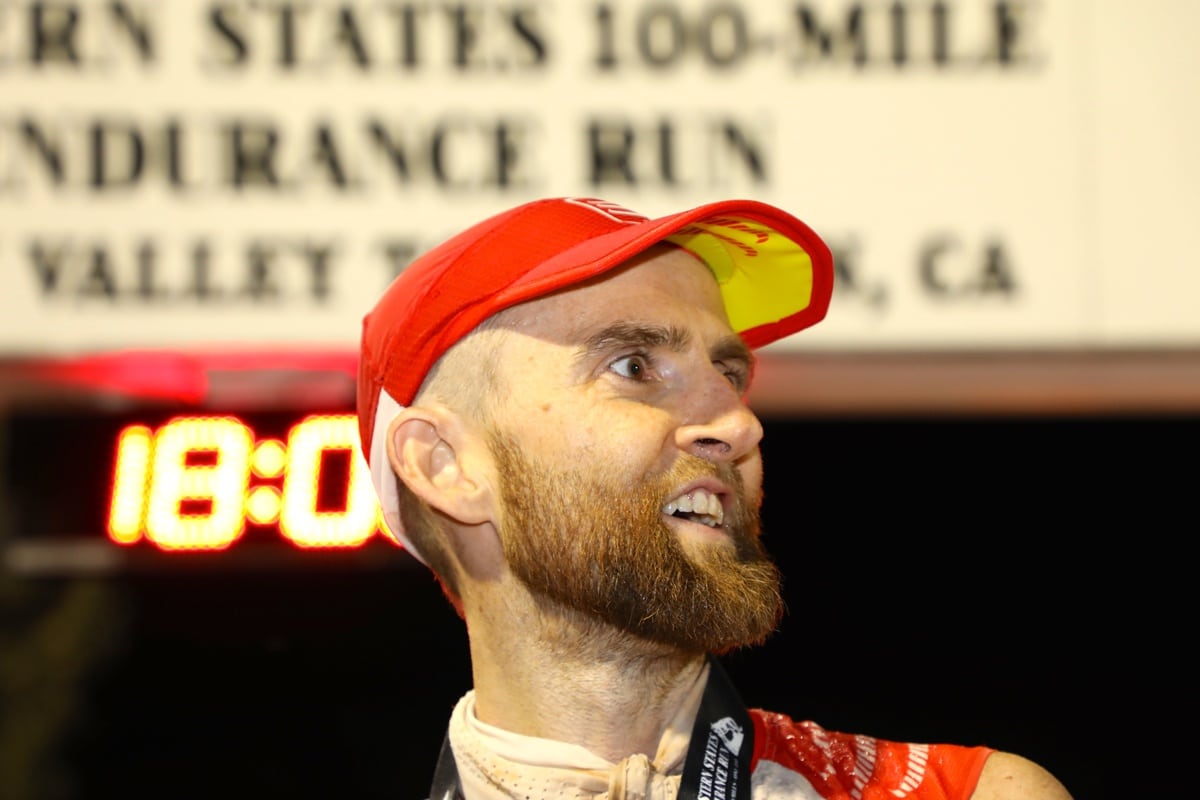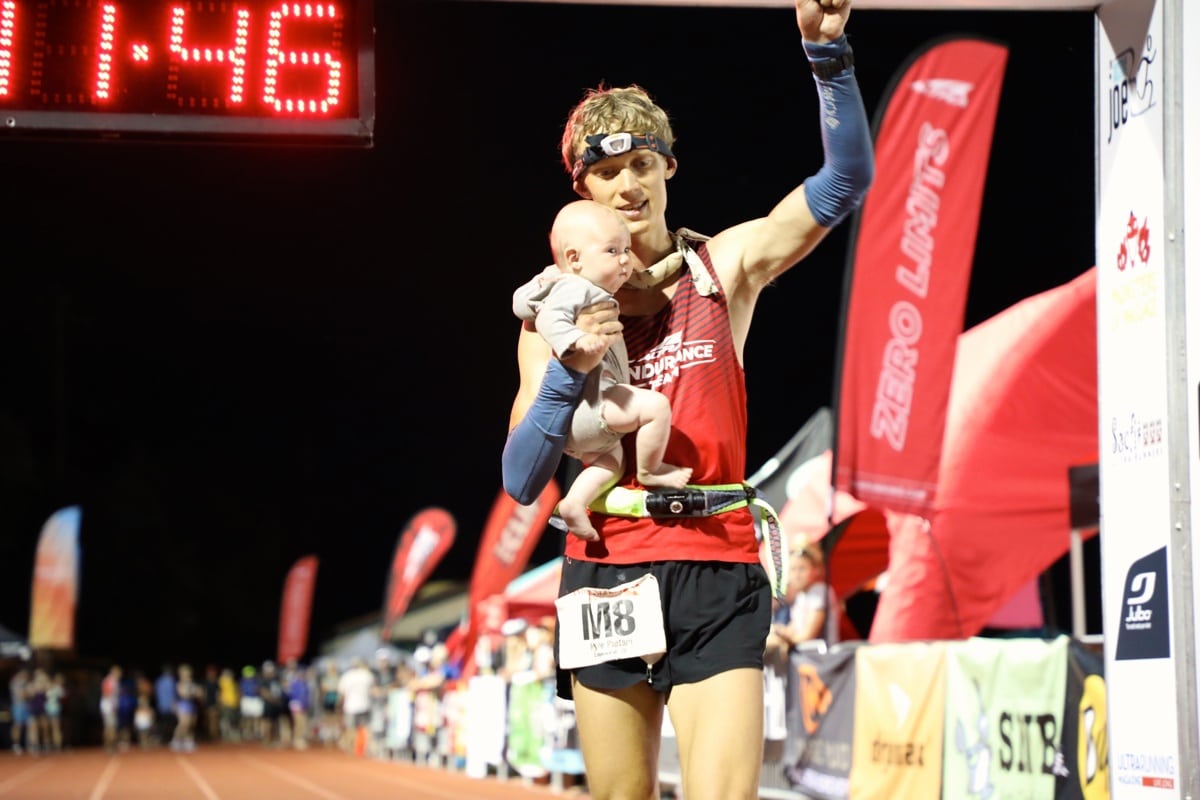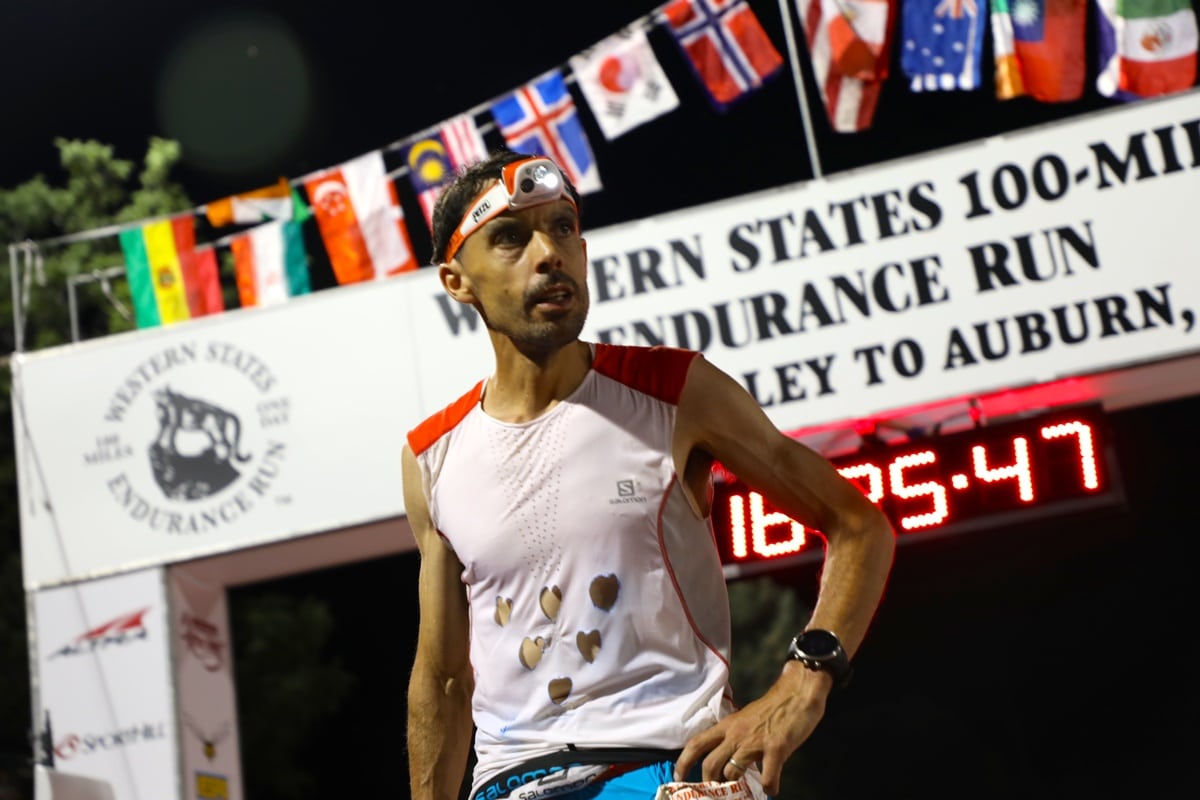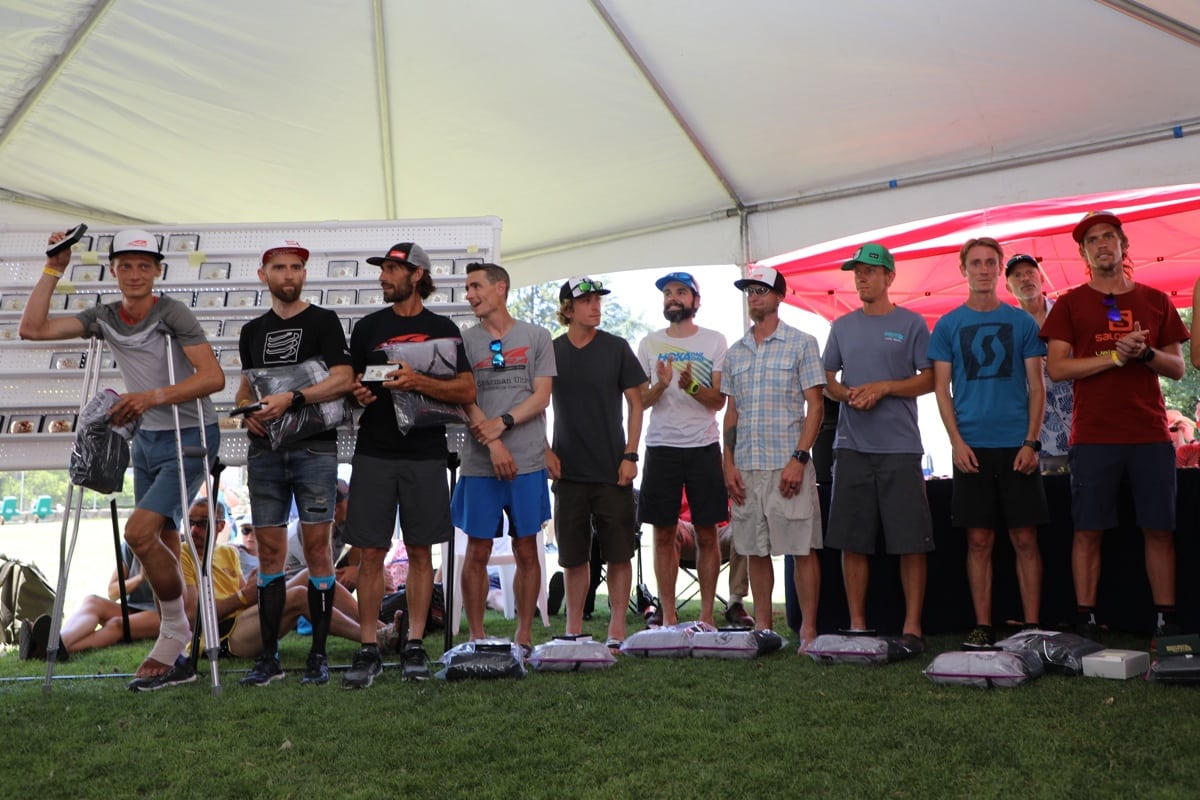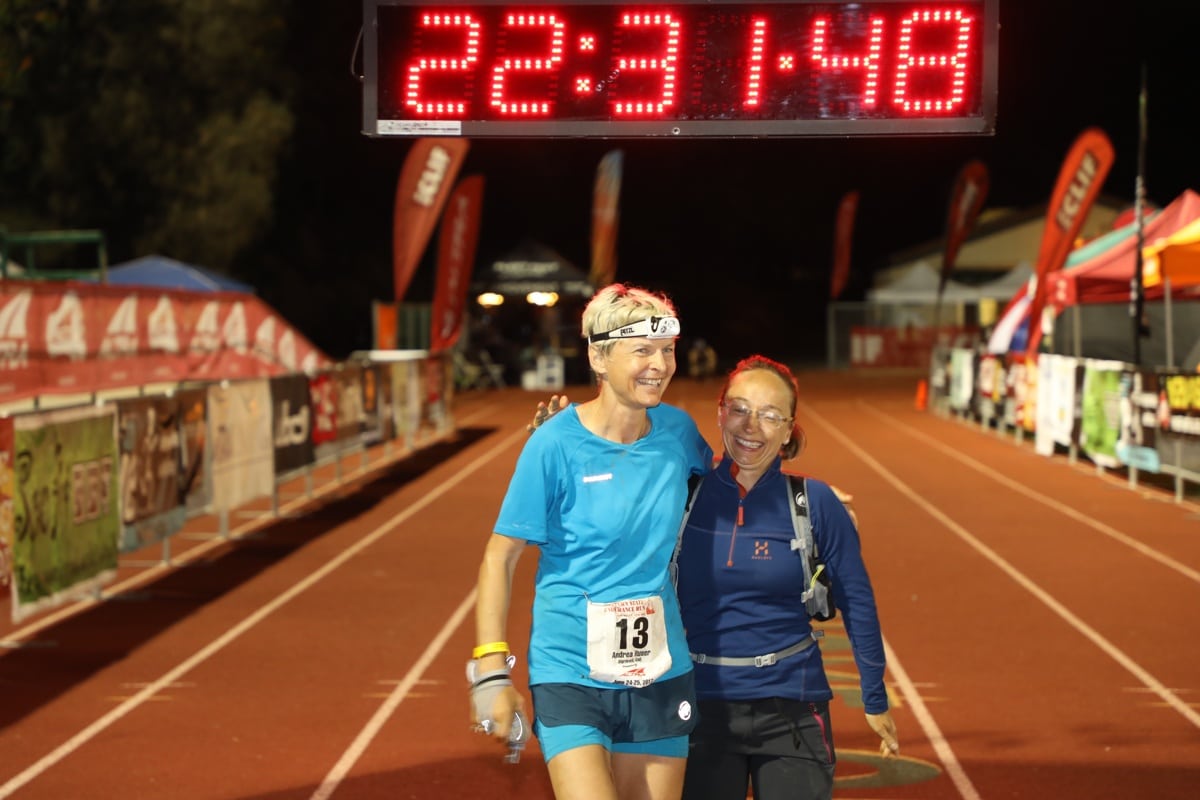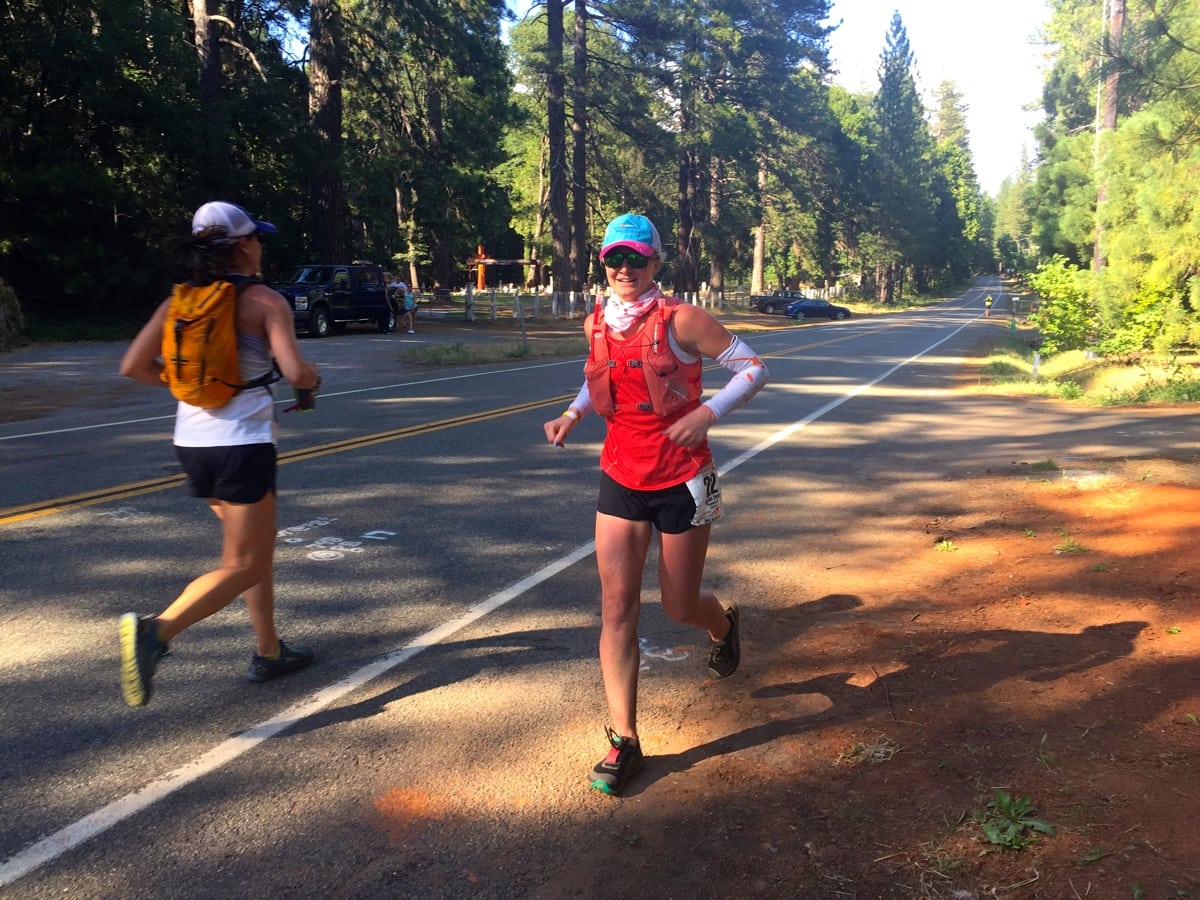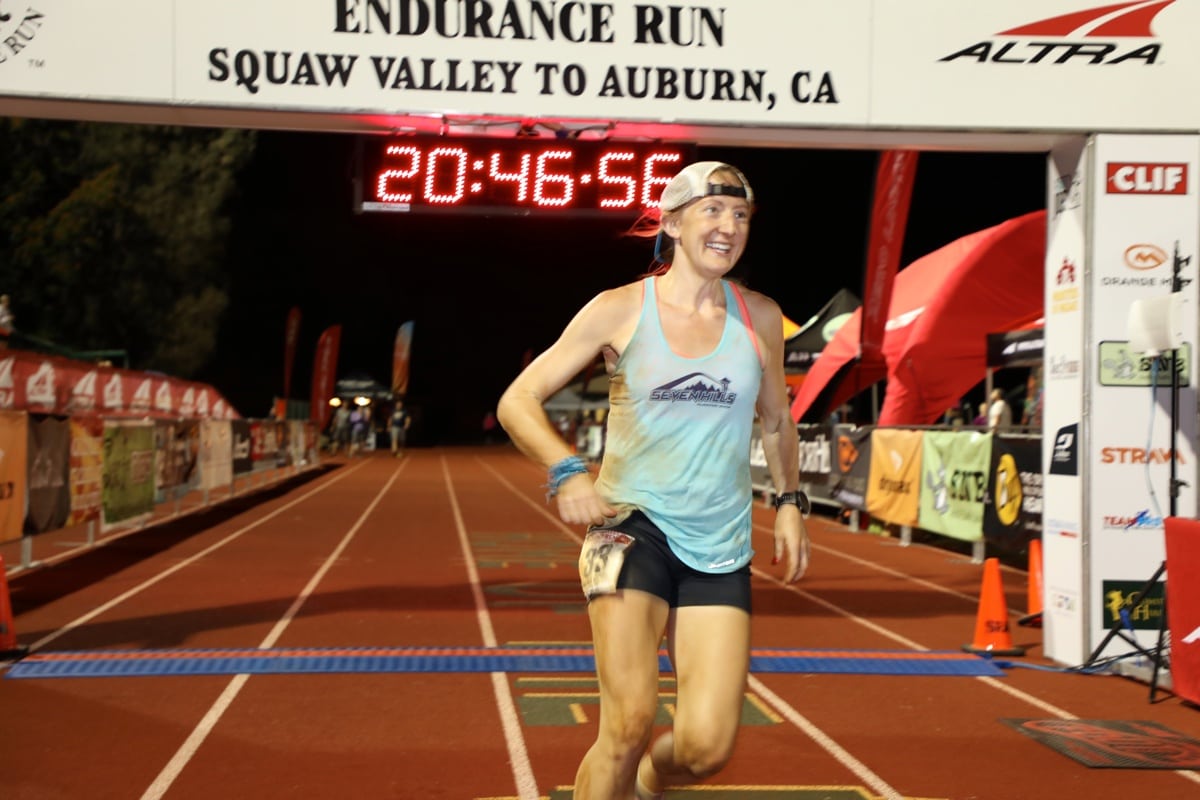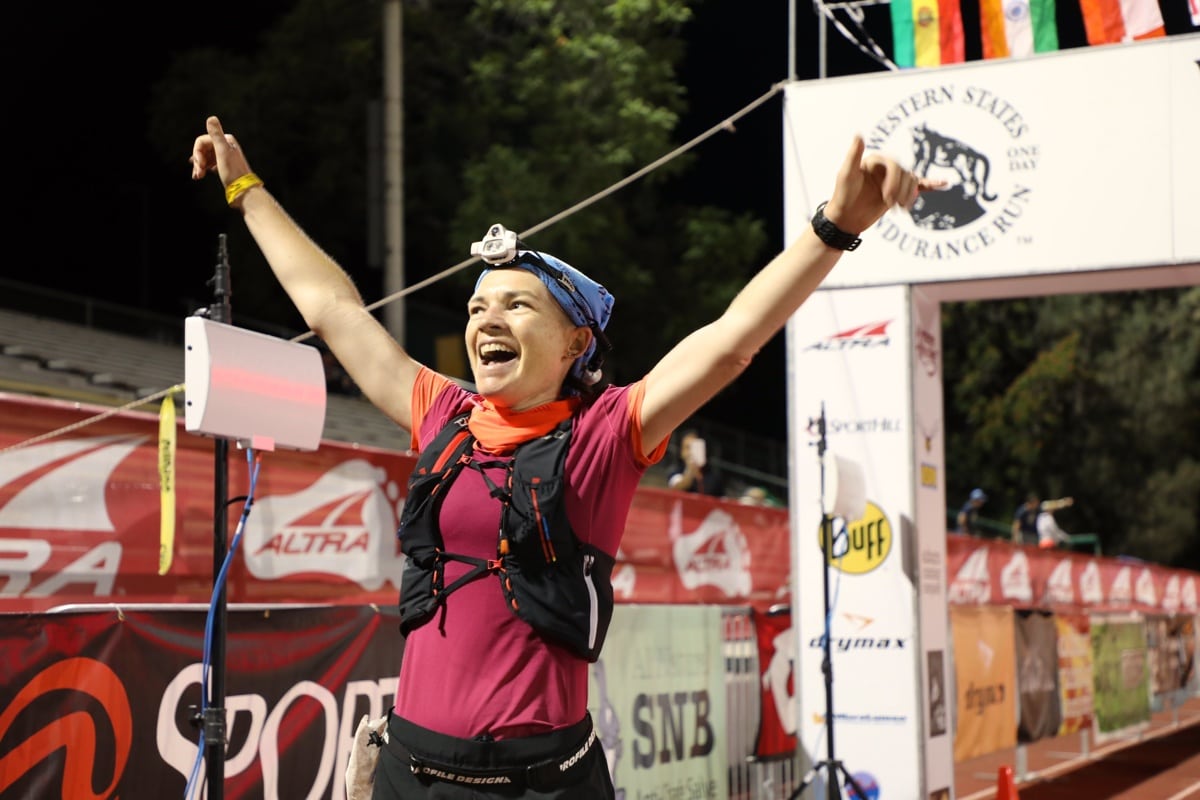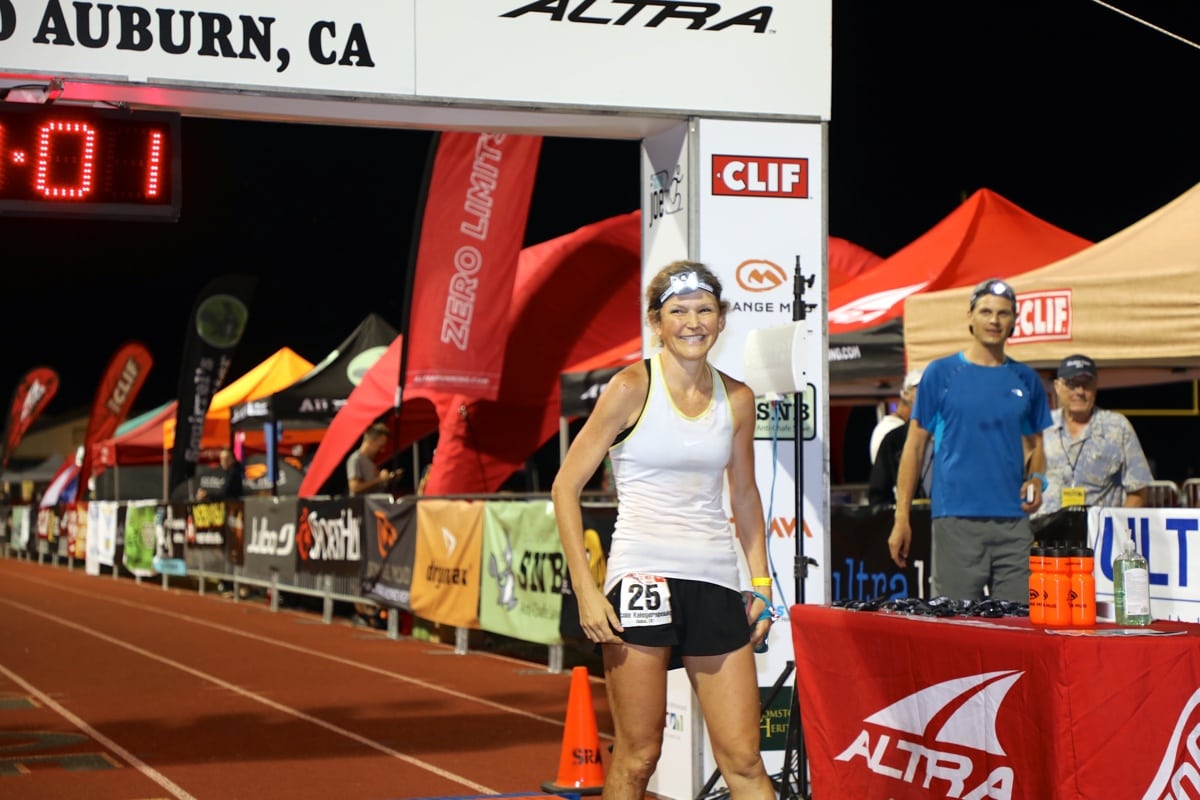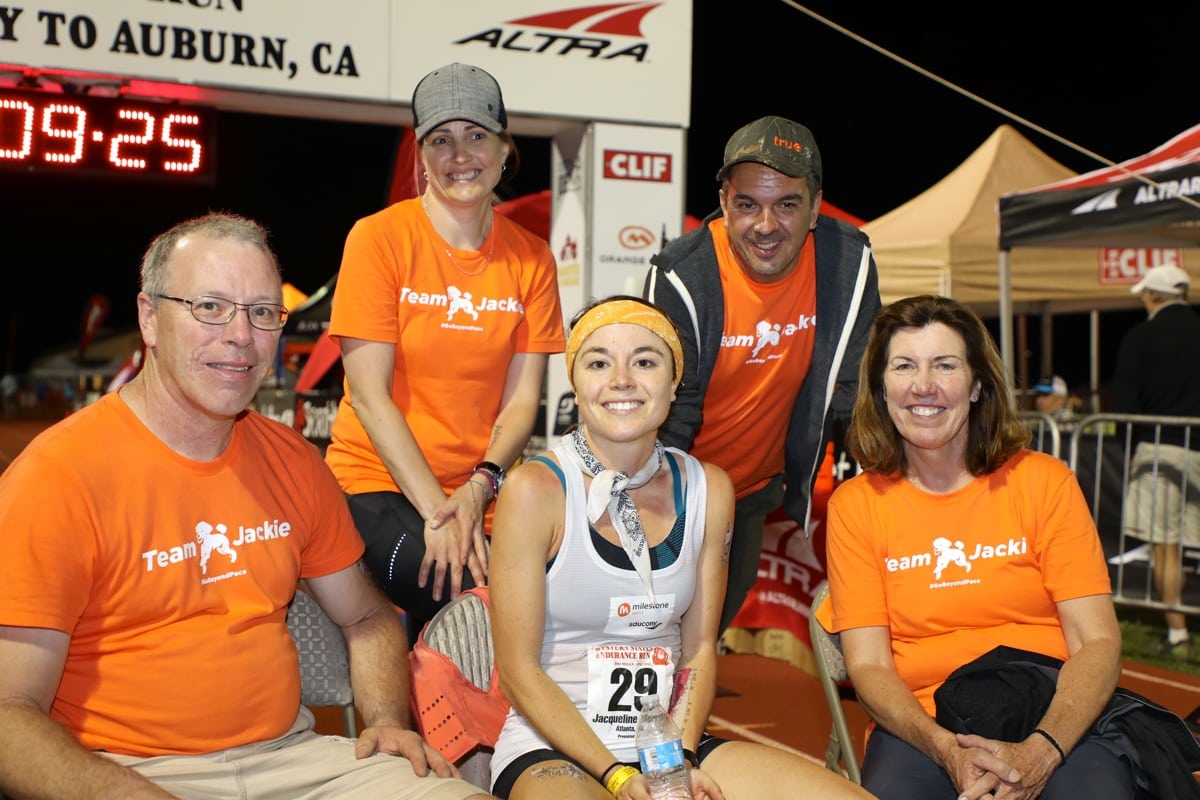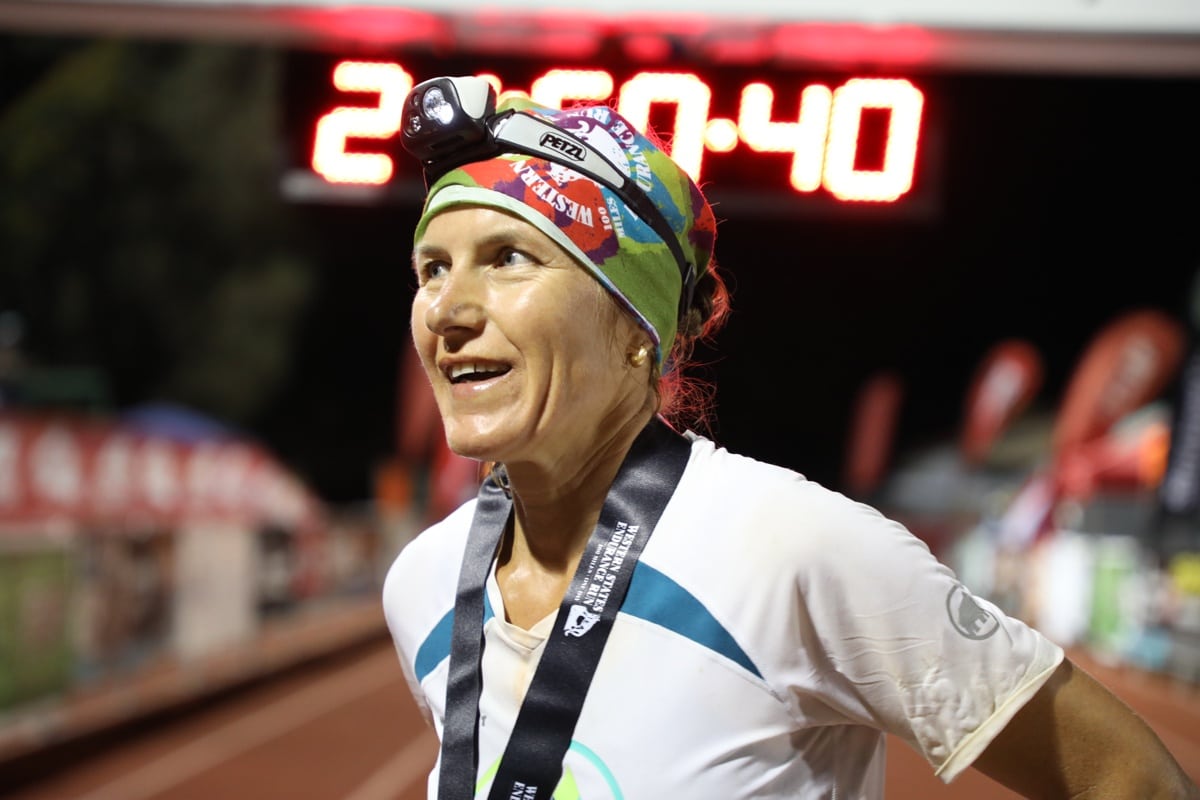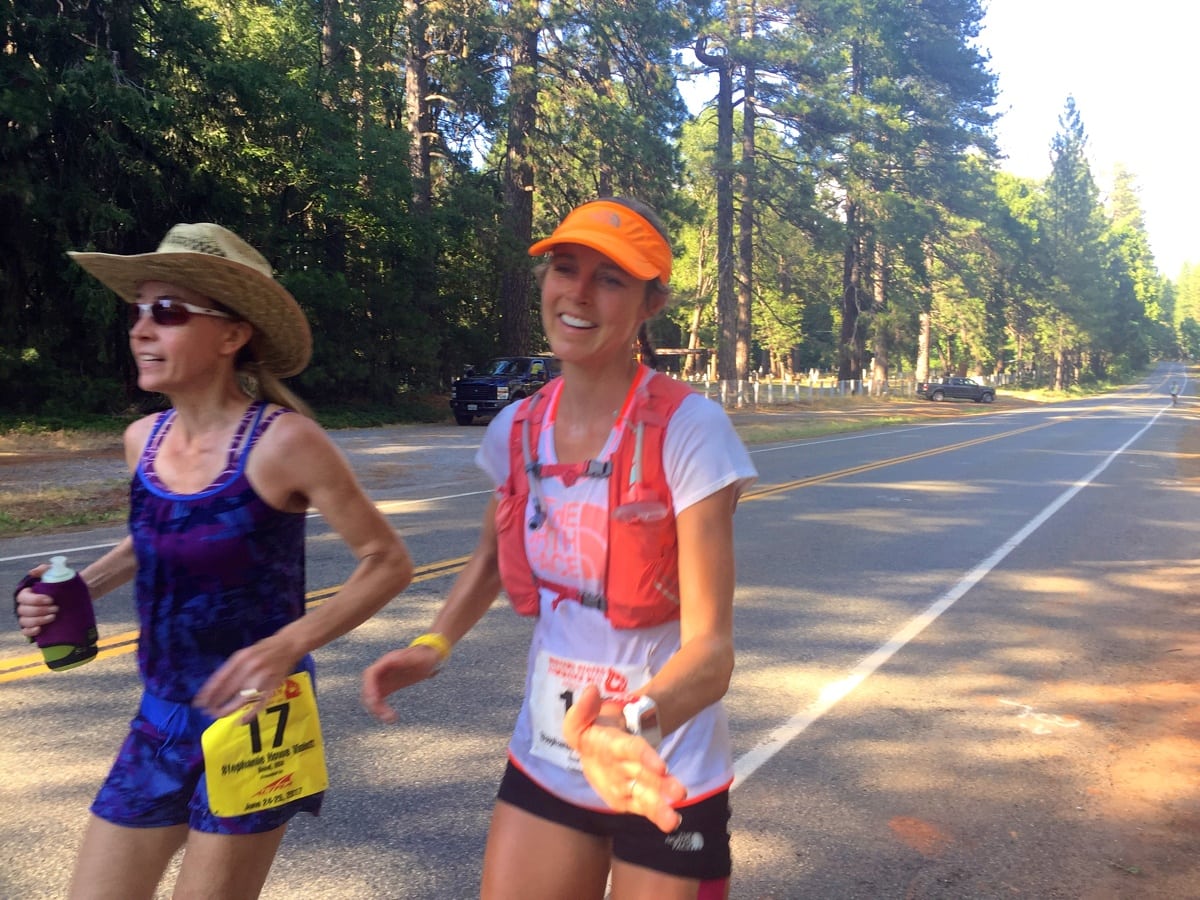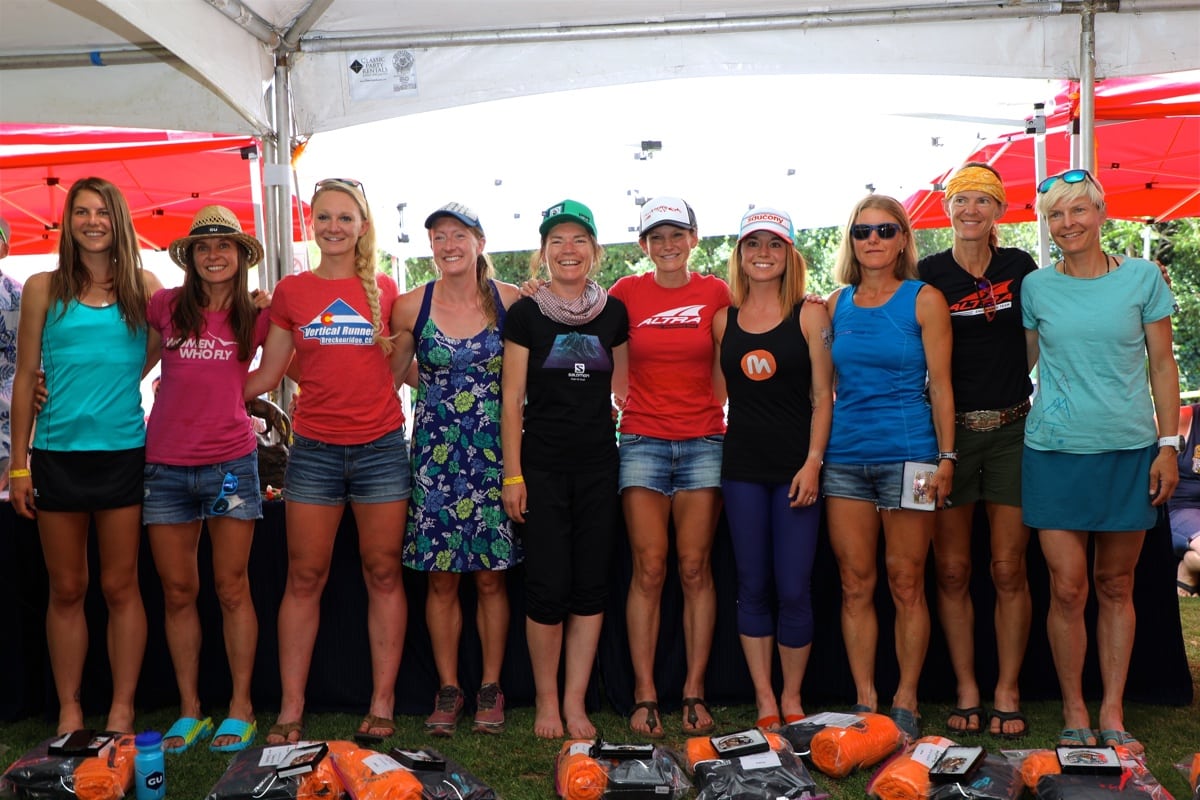 Hot weather and the snow, mud, and water remnants of a 100-year winter event in California’s Sierra Nevada worked together to create difficult racing conditions for the 2017 Western States 100.
Hot weather and the snow, mud, and water remnants of a 100-year winter event in California’s Sierra Nevada worked together to create difficult racing conditions for the 2017 Western States 100.
It was in those conditions that South Africa’s Ryan Sandes and the USA’s Cat Bradley won. This was Sandes’s fifth shot at the race, and it improves upon his previous second place, fifth place, DNS, and DNF. And Bradley’s win represents a breakout performance among a super-competitive field in her first go at the event.
Top finishers in both the men’s and women’s fields are the runners who seemed to tolerate the conditions and race with a self-preservational style. Alex Nichols and Mark Hammond represented the rest of the men’s podium, while Magdalena Boulet and Sabrina Stanley made up the balance of the women’s.

 A special thanks to Drymax for making our coverage of the Western States 100 possible!
A special thanks to Drymax for making our coverage of the Western States 100 possible!
Thanks also to Altra and GU Energy for their support of our Western States coverage.
To get all the latest ultra news from iRunFar.com, subscribe via RSS or email.
2017 Western States 100 Men’s Race
Just 3.5 miles into the 2017 Western States 100, over the race’s high point at 8,713 feet, Jim Walmsley (pre-race interview) led the entire men’s field by seven minutes, making a straightaway statement that he, indeed, would try to carry out his pre-race plans of racing these 100 miles aggressively. The next time that the iRunFar team saw Walmsley, atop Red Star Ridge 15 miles into the race, he’d grown his lead to 18.5 minutes. By all descriptions these 15 miles of trail contained the remnants of the region’s 100-year winter of snow, mud, running water, downed trees, and obliterated trail surfaces. It was conditions which slowed the rest of the field considerably—from the front to the back of the pack—but conditions which Walmsley most certainly pushed through.

Jim Walmsley topping out on the Escarpment at mile 3.5 well ahead of everyone else. Photo: iRunFar/Jake Beiler
From here to mile 56, at Michigan Bluff, Walmsley significantly increased his gap on the rest of the field. Here it is in numbers: at mile 24 he was 30 minutes up on the field, 37 minutes at mile 30, 40 minutes at mile 38, 38 minutes at mile 43, 47.5 minutes at 48 miles, and 56 minutes at mile 55. Each time that we saw him during this stretch, he looked pretty darn solid to us. That said, looking back on how Walmsley’s day would ultimately play out, perhaps there was at least one clue that things weren’t quite perfect. At mile 38 in the Dusty Corners aid station, Walmsley spent a full 4.5 minutes. A couple of those minutes went similarly to the other lead men—where he spent time dousing himself with water and ice and hydrating—but he also spent a couple minutes stretching, talking about “resetting,” and kind of just standing there.
At mile 62 in Foresthill, Walmsley’s gap over the rest of the field began to decrease. Even worse, his crew would later report that he vomited there. Mile 71, about halfway between Foresthill and the river crossing along the infamous Cal Street, Walmsley reported stomach issues again. The heat of the day was at this point on, with temperature reports of 100 degrees Fahrenheit in Michigan Bluff and the mid-90s in Foresthill, what amounts to just a bit above normal for this region. Between there and the river, Walmsley’s race fully fell apart and he ended up laying on the ground and in the shade. He’d eventually make it to the river crossing at mile 78 and drop, citing that he hadn’t been able to eat in hours. It was thusly gastrointestinal distress—a common ultrarunning ailment especially in long races with hot temperatures when the stomach fails to digest at normal rates due to blood shunting from the stomach to the extremities to help cool the body—that appears to have ended Walmsley’s day.
And then there was the rest of the men’s field and men’s race, which seemingly operated on a parallel but equally dynamic storyline. Rewinding to mile 15, we weren’t surprised to see the chase pack being led by Sweden’s Elov Olsson—who threatened in his pre-race interview to do so—and France’s Erik Clavery, who always starts races fast. At mile 24, the men shuffled places and South Africa’s Ryan Sandes (finish-line and post-race interviews) had moved into second position, with Olsson and countryman Jonas Buud (pre-race interview) running together in third and fourth positions. I was actually surprised to see Buud as far up as he was here relative to the bulk of the men’s field, as he’s typically a conservative starter who moves up later. This makes me wonder if Buud’s racing strategy was influenced by wanting to run with another Swede or something else?
By mile 30, Sandes was starting to make his mark on the race and setting himself apart from the rest of the field. Though he was 37 minutes back of leader Walmsley, he was now eight minutes ahead of every other runner. This situation—Sandes in second position and set ahead of the rest of the men’s field—would continue for some 40-plus miles to where he would overtake Walmsley and move into first place. Once Sandes took over the lead, he had 22-plus miles to the finish. In that time, Sandes would increase his gap over the rest of the field from a little over 10 minutes to 29 minutes, demonstrating his capability and strength in the day’s difficult conditions, first snow and mud and more in the race’s first 15-plus miles and then the normal-but-always-baking heat later.
The race for the men’s top 10 continued to be dynamic and enthralling. Early pace pushers Buud and Olsson still occupied third and fourth positions at mile 30, though Buud had gapped Olsson by five minutes. In the fifth position at mile 30 was now Clavery. Move eight miles down the course to Dusty Corners and the game changed again, with Clavery and Olsson dropping back as opposed to Chris DeNucci and Alex Nichols (pre-race and post-race interviews) moving up. While we couldn’t know it just yet, this was a foreshadowing of what was yet to come.
Fast forward to Michigan Bluff at mile 56, and Buud was at the cusp of falling out of the men’s top five as he began to struggle. At the same time, Nichols moved up to third position looking calm and collected in the canyons during the heat of the day. Also having moved up was Spain’s Tòfol Castanyer, who had been running in fourth at Michigan Bluff before missing a turn, spending significant time off course, and dropping back many places on his way to Foresthill.
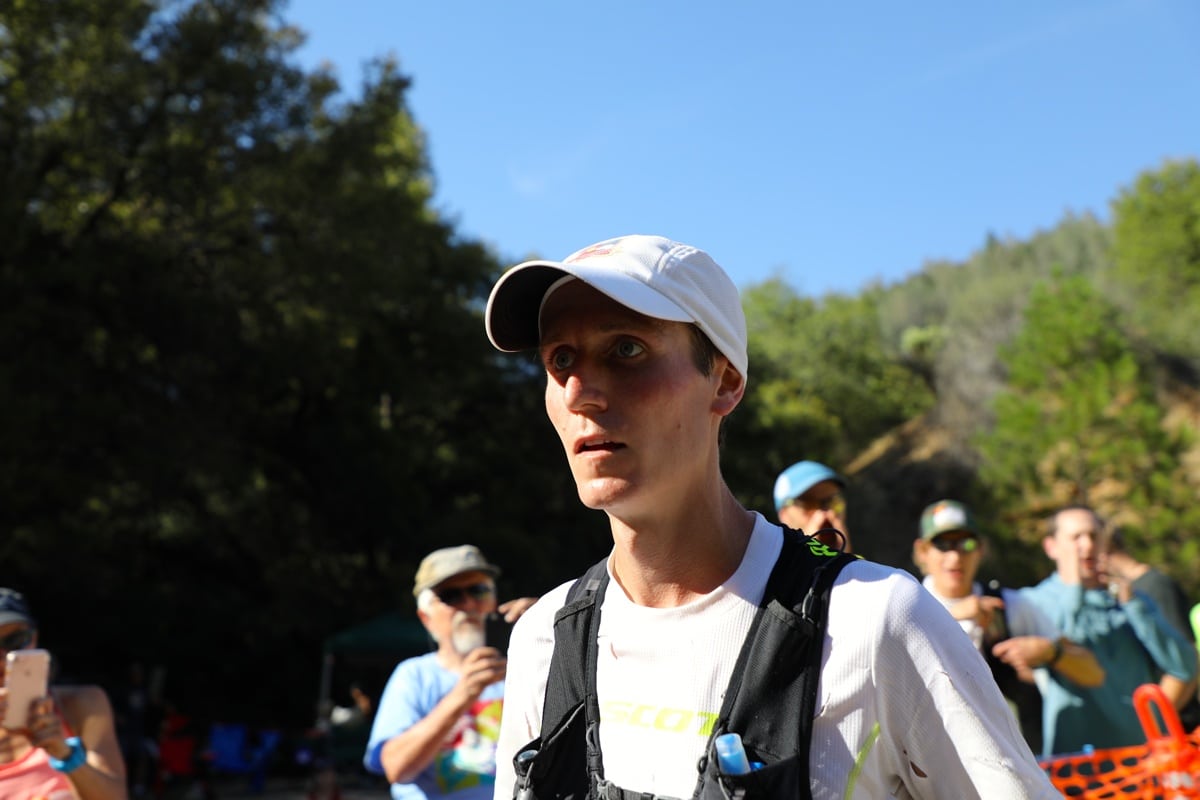
Alex Nichols enjoys the shade of his hat at the American River crossing. Photo: iRunFar/Bryon Powell
By mile 71, the men’s podium was sorting itself out, as Nichols and, now, Mark Hammond (post-race interview) had floated to the top and held steady in their positions of third and fourth. That said, Hammond pressured the heck out of Nichols in the race’s final quarter. Between the river crossing at mile 78 and the Auburn Lakes Trails aid station at mile 85, Hammond cut the gap he had to Nichols from 10 minutes to three. This drama heightened, though, because when Nichols and Hammond crossed the iconic No Hands Bridge at mile 97, they were separated by just 30 seconds. Nichols must have absolutely hammered starting then, as upon hitting Robie Point, the top of the final climb and just 1.3 miles from the finish, a full four minutes separated the pair, how they’d ultimately finish.
Now what about the rest of the men’s top 10? Well, now is presently a great time to be a fan of trail ultrarunning, where competitive, long races like this one continue to move and shake all the way through the finish. Remember that guy Jeff Browning (pre-race interview), who finished third last year? Yeah, he’s someone you just don’t want behind you at any point of the second half of a long ultra—he’s got a career that’s built on passing late-race carnage. Browning, who would ultimately finish fourth, didn’t even see the back end of the men’s top 10 until mile 78. Wrap your head around that one. By mile 94, Browning moved into fourth position and hammered that one all the way home.
Though Browning has loads of 100 milers under his belt—a great knowledge foundation—25-year-old Avery Collins played the field in precisely the same manner. In basically an 8.5-mile stretch of trail starting at Foresthill, mile 62, he ran from 13th into sixth position. It appeared that he continued to push from there home and we saw him move up to as high as fourth place before he ultimately finished sixth. A lot of racing wisdom in a 25 year old!
And what would a modern-era Western States top 10 look like if it didn’t include Ian Sharman and his very similar second-half-move-up strategies? M6 last year, Sharman brought home the M7 position in 2017.
One more dude raced like this, too, Jesse Haynes, 10th last year and now eighth this year. Future men’s top-10 hopefuls, take note that Browning, Sharman, and Haynes were close together in 15th through 18th and an hour off the lead and five minutes out of the top 10 at mile 30.
DeNucci took home M9 last year through a steady-eddy, all-day performance, and same goes for this year. It seemed he was decisively present in the middle part of the men’s top 10 in the race’s first quarter, and though he hopped around positions pretty much all day, he improved to claim the M5 position for this year.
Scotland’s Paul Giblin, who took fifth last year, went on a rampage during the first half of Cal Street after Foresthill—not unlike Collins—and moved up from 10th to fifth position. It was a spot he would not be able to hold, however, as he would lapse back to his ultimate ninth-place spot.
Last year’s M8 Kyle Pietari (post-race interview) rounded out the men’s top 10 as he limped over the finish line, needed to be carried away from it, and claimed his belt buckle at the award ceremony the next day on crutches. We learned that he sprained his ankle by rolling it badly at mile 7. That makes it all the more of a feat that he landed in the M10 position.
Early pace pushers Castanyer, Buud, Olsson, and Clavery all finished, but outside the men’s top 10 in 11th, 12th, 13th, and 16th overall, respectively. Particularly heartbreaking has to be Castanyer’s finish in 11th after a 12th last year, just outside the men’s top 10.
2017 Western States 100 Men’s Results
- Ryan Sandes (Salomon) — 16:19:37 (finish-line and post-race interviews)
- Alex Nichols (SCOTT) — 16:48:23 (pre-race and post-race interviews)
- Mark Hammond — 16:52:57 (post-race interview)
- Jeff Browning (Altra/Patagonia) — 17:32:06 (pre-race interview)
- Chris DeNucci (Hoka One One) — 17:36:11
- Avery Collins (Inov-8) — 17:37:11
- Ian Sharman (Altra) — 17:42:06
- Jesse Haynes (Altra/Patagonia) — 1744:23
- Paul Giblin (Compressport) — 17:59:06
- Kyle Pietari (Altra) — 18:11:44 (post-race interview)
Check out videos of the top-three men finishing.
2017 Western States 100 Women’s Race
It is safe to say that the 2017 Western States 100 women’s race was highly anticipated. Three previous champions, some more world-class talent, and a boat-load of up-and-comers among the entrants list made all of us talk about the potential of a race for the ages. Add in heavy doses of high-country madness via reportedly soul-and-shoe sucking snow, mud, and water as well as the usual heat ingredient and, when all was said and done and the ladies connected the dots between #seeyouinquaw and #seeyouinauburn, actuality equaled hype. I realize I’m a woman and probably biased in my interest of women’s races, but holy hell the women’s race!
Amidst the insanity of Jim Walmsley’s early gap on the men’s field, I failed to notice the significant early stamp that Switzerland’s Andrea Huser was making on the women’s race, after initial leader Camille Herron (pre-race interview) quickly succumbed to the high-country’s snow and mud. When we first saw Huser at mile 15 along Red Star Ridge, she was a full seven minutes in front of all the other women, what amounts to an effort at nearly 30 seconds per mile faster than the rest of the field. Whoa. Some 15 miles later, at the mile 30 Robinson Flat aid station, Huser remained seven minutes ahead, holding steady. Everything changed, though, at mile 38, when YiOu Wang (pre-race interview) cruised in, leading the women’s field, having sliced through all of Huser’s lead and gapped her by more than 1.5 minutes. At this point, Huser began to continuously slip back in the women’s field.
Let us thus move on to phase two of the women’s race for the win, where Wang led and was closely chased by several other women. Each time we saw the women at miles 43, 48, 56, and 62, Wang was ahead, but it was close—a few minutes here and there separated her from her chasers. At Foresthill, mile 62, Cat Bradley (finish-line and post-race interviews) was second just seconds behind. Nonetheless, Wang looked rock solid as she headed down Cal Street after Foresthill. All of this would change in just a few short miles as she would—like men’s leader Jim Walmsley—come to a full stop on the ground. Wang experienced some serious health issues that she would describe later on social media as numbness and hyperventilation. A lot of time passed (during, as we understand it, she was observed by the race’s medical team) before she’d get up, walk to the Peachstone aid station at mile 71, and withdraw from the race.
Phase three of the race for the women’s lead began on the trail before Peachstone, as Bradley—who had been closely lurking at mile 62—took over leadership of the race. Simply said, she ran from there untouched by any other woman for the race’s final 30 miles. That’s not to say that she didn’t feel pressure from behind, as she said after the race that she definitely ran faster because she knew strong women were running swiftly behind her. Though some women may have been trying to hunt her down, she only increased her lead over them. When Bradley passed a soon-to-DNF Wang between miles 66 and 70, the former was 13 minutes ahead of the next woman still chasing her. After that, she led by nine minutes as mile 78, 12 minutes at mile 80, 13 minutes at mile 85, 12 minutes at mile 94, 15 minutes at mile 97, and 18 minutes at the finish. Bradley closed out phase three in the race for the win as the women’s champion in, undoubtedly, a huge breakout performance.
Magdalena Boulet (pre-race and post-race interviews), 2015 Western States champion, and Sabrina Stanley (post-race interview), another young runner having a breakout performance, would cross the line in second and third place, completing the women’s podium. Though they finished with just 22 minutes separating them, their journeys there were unique. Boulet ran most of the race in the women’s top five and among the women in the race’s final two thirds who were constantly pressuring the race leader. Boulet would say after the race that the high-country conditions took a lot out of her legs and that, as a result, she was forced to run carefully for many miles in order to manage her physical well being. That said, I think all bets were officially off during the final 25 miles or so when she was working hard, running swiftly, and hunting for the lead. During this, we saw her four times, at miles 80, 85, 94, and 97, and the woman definitely had her chase on.
Stanley, on the other hand, raced for the first 30 miles outside of the women’s top 10, cracking it for the first time at the Robinson Flat aid station, mile 30. She’d stay there at mile 38, run in 11th at mile 43, and in 11th again at mile 48. After that, at mile 56 in Michigan Bluff, she’d moved up to eighth place, but she was only getting started. A few miles later in Foresthill, mile 62, she was seventh. At mile 71, she had cracked the women’s top five. Holy smokes she was on fire. The overtaking of fourth and fifth places came in due course, and Stanley would round out the women’s podium.
Fourth-place Kaytlyn Gerbin took a page out of the go-easy-then-chase-hard playbook with her run. Quite honestly, the iRunFar team didn’t even see Gerbin for well over half of the race, as we’d departed aid stations bound for the next ones before she passed through them well outside the women’s top 10, so I don’t know much about how the first two thirds of her race went. However, I do know that the woman must have hammered the bottom half of Cal Street, between miles 71 and 78, as she arrived to mile 78 at the Rucky Chucky river crossing as seventh female. What? Where’d she come from? It went on like this from there to the finish where Gerbin would continue to move up until her ultimate finishing position.
New Zealand’s Fiona Hayvice finished fifth! We’d watched her race a couple times at the Tarawera Ultramarathon, so we were aware of her ability to race well on her home turf. Thus, I was interested in seeing how she’d shake out among the high-level field assembled at Western States. Well, things shook out pretty darn well! Like so many of the women who ultimately finished in the women’s top 10, a conservative start, gradual move-up into the top 10, and steady finish formed her winning recipe.
Nicole Kalogeropoulos took sixth place, matching precisely her 2015 finishing place and avenging her DNF last year.
Jackie Merritt (post-race interview), who has been kicking the pants off women’s fields up and down the U.S.’s East Coast (and, let’s face it, often men’s fields, too) for years brought her ability to the big stage and took home the F7 position.
Both F8 and F9 proved that age isn’t an excuse, as 52-year-old Ildikó Wermescher of Hungary and 56-year-old local resident Meghan Laws rocked it hard in the race’s second half to move up into the top 10.
Tenth place was, finally, Huser, the race’s early leader who began a slow slip back in the rankings starting at mile 38. She’s world class, though, having won and placed high in some of the world’s toughest ultramarathons. It seems that she used that same talent and drive to hold onto a top-10 position.
It’s hard to imagine that we could get this far in our description of the women’s race and not have mentioned two of the three Western States champions who started–and finished–the event, 2014 champ Stephanie Violett (pre-race interview) and 2016 winner Kaci Lickteig (pre-race interview). Suffice it to say, both women suffered to finish, respectively, in 12th and 16th places. Both women factored into the front of the women’s race all day long, with Lickteig even running in or just outside of podium position as far as 47 miles into the race. Various physical issues beset them both, however, and though they slowed significantly, they each chose to stick it out to the Placer High finish line.
2017 Western States 100 Women’s Results
- Cat Bradley (Salomon) — 19:31:30 (finish-line and post-race interviews)
- Magdalena Boulet (Hoka One One) — 19:49:15 (pre-race and post-race interviews)
- Sabrina Stanley — 20:11:41 (post-race interview)
- Kaytlyn Gerbin (7 Hills Running Shop) — 20:46:55
- Fiona Hayvice (Salomon) — 20:51:27
- Nicole Kalogeropoulus (Altra) –21:00:52
- Jackie Merritt (Milestone Pod) — 21:07:23 (post-race interview)
- Ildikó Wermescher (Mammut) — 21:50:32
- Meghan Laws (Altra) — 21:57:09
- Andrea Huser (Mammut) — 22:31:45
Check out video of the top-three women finishing.
Coverage Thanks
We had an incredible crew who helped deliver iRunFar’s live coverage. Thanks to Marissa Harris for anchoring our live-coverage team in the office throughout the race. Thanks to Nick Shoemaker, Graham Cox, Elam King, Jake Beiler, Andy Jones-Wilkins, Kim Wrinkle, Greg Power, Brian Condon, Steve Luker, Sophia Duluk, Casey Szesze, Ryan Koch, and Kirk Edgerton for their in-the-field, all-day-and-night volunteer hiking, running, driving, and… of course, reporting.
